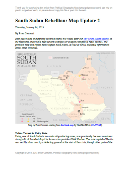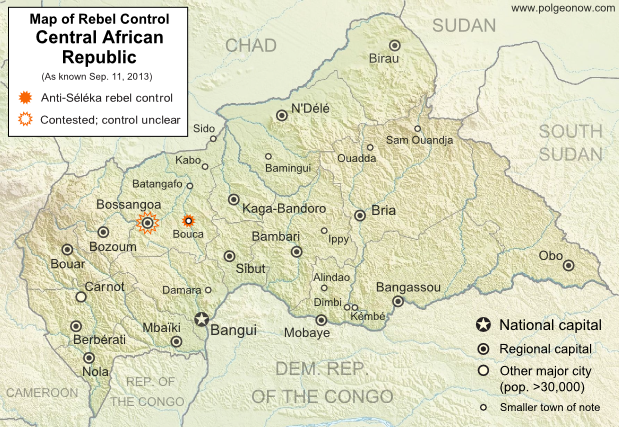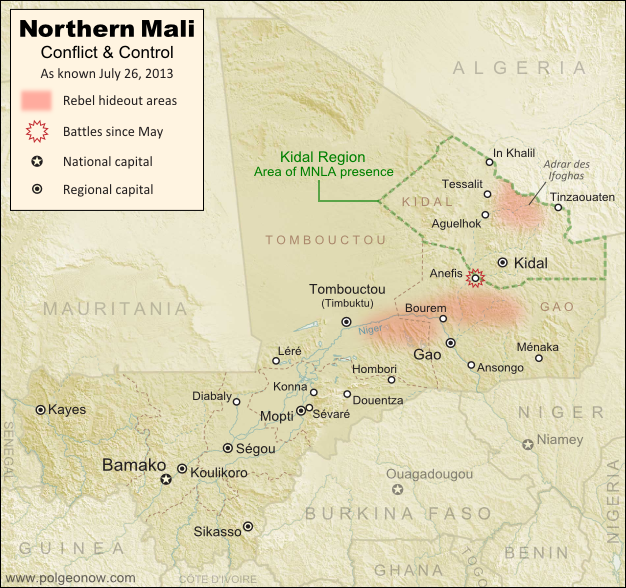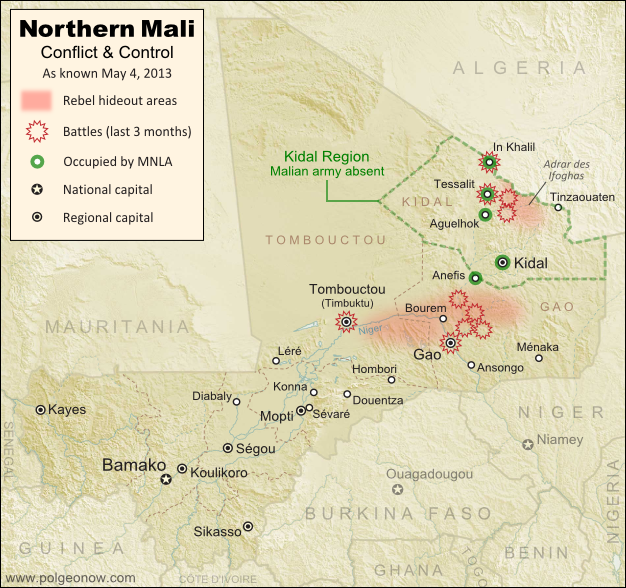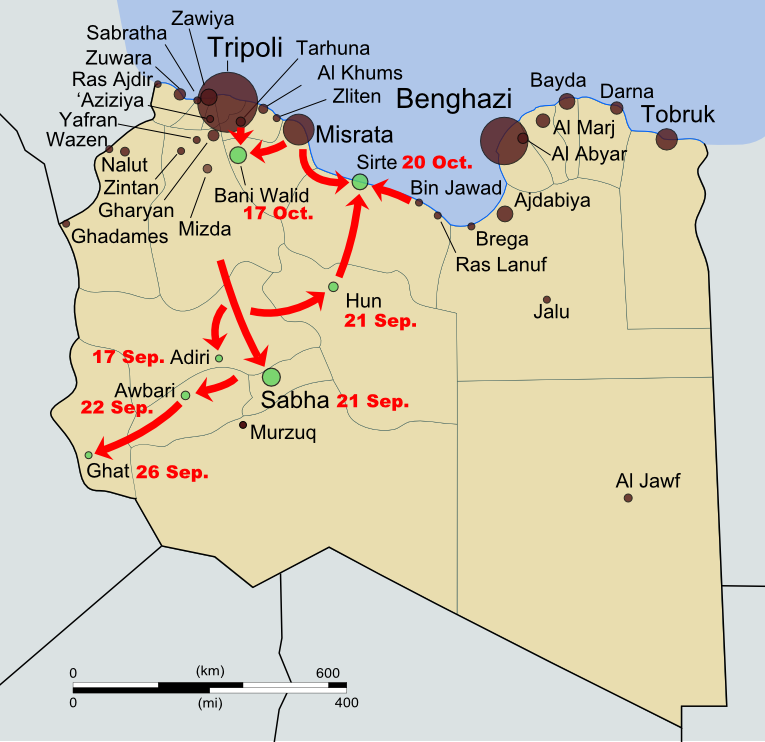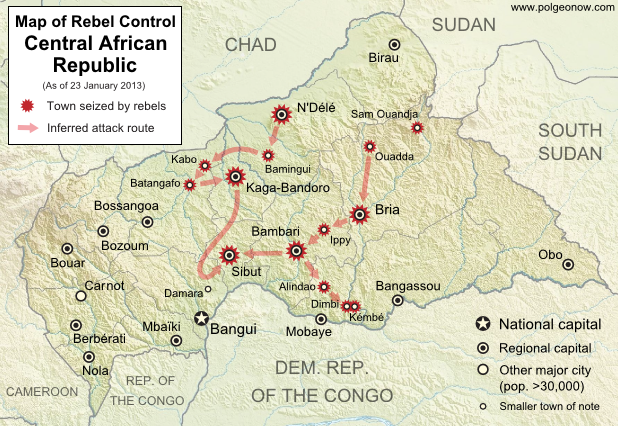[Editor's note: This map article was published in late 2013, and was originally intended to be the first piece in PolGeoNow's
conflict map subscription service. Subscriber coverage has since refocused on other conflicts, and we're now making this piece free for all readers.]
From 2012 to 2013, the M23 rebels became the Democratic Republic of the Congo's most powerful rebel group in recent history, establishing military control over a major city in country's east. You may have heard how M23 was defeated suddenly in late 2013, but do you know what territory they controlled while they were active? Learn more with this exclusive map of M23's territorial possessions over time, as well as a primer on the group's short history and ultimate defeat.
 |
Map by Evan Centanni (all rights reserved).
|
Congo's War with M23
The Democratic Republic of the Congo - formerly known as Zaire - has been at war for decades. After serving as the stage for a
regional conflict partly sparked by the
Rwandan Genocide in the mid-1990s, as well as a
follow-up war spanning officially from 1998 to 2003, the eastern DRC has become the stomping ground of
dozens of rebel groups with often-shifting allegiances.
The
March 23 Movement, better known as M23, only appeared in May of 2012. However, it quickly became the most prominent of the many rebel forces operating
in the region, carving out its own area of territorial
control and proving a match for the Congolese army. In late 2012 it captured Goma, a city of one million and the capital of Congo's North Kivu province. It was eventually crushed in a rapid military campaign by the army and a UN peacekeeper intervention brigade in November 2013.


